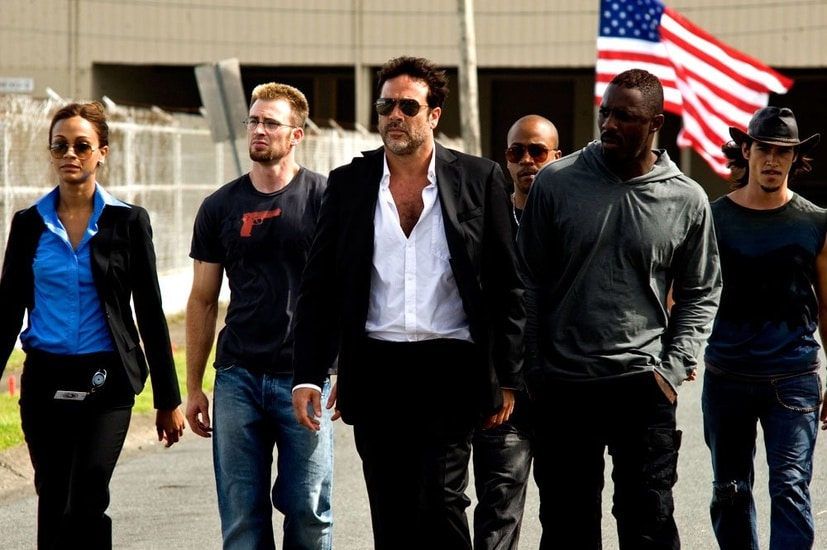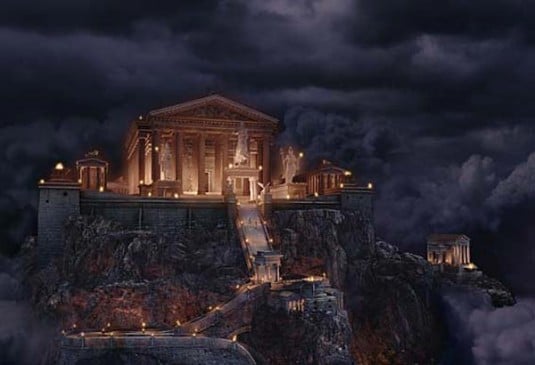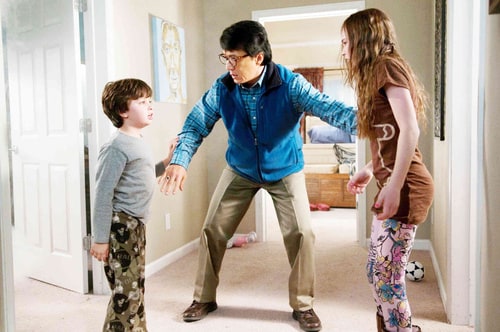One must admit, it takes serious guts to entitle a film The Losers, since lame jokes are just begging to be cracked. Already, the critics who panned this appalling motion picture have utilised the obvious "The losers are in fact the audience" in addition to the also obvious "What were you expecting? It's called The Losers". Added to this, another thing you can count on is the film's screenwriters referencing the title on several occasions. In the very first scene, the line "Hey, you losers!" is used, and from there the references keep on coming. Alas, these one-liners lack the zing you'd anticipate, while the action is unbelievably pedestrian and the film rapidly degenerates into the same type of PG-13 junk you'd expect Michael Bay or Brett Ratner to deliver (though the filmmakers did not even aim that high). The Losers (based on a series of comics) should have delivered over-the-top action and large explosions. Instead, The Losers is all about limits: limited budget, limited scope, limited effort and limited imagination. Even the movie's best moments are still abjectly disposable.

The movie kicks off in Bolivia, where the audience is introduced to the titular team of Special Ops warriors: sniper expert Cougar (Óscar Jaenada), tech expert Jensen (Chris Evans), escape driver Pooch (Columbus Short), second-in-command Roque (Idris Elba), and the leader, Colonel Clay (Jeffrey Dean Morgan). When the operation goes south, The Losers attempt to rescue a number of children by sacrificing their place on their extraction aircraft. Unfortunately, the team is betrayed and their aircraft is destroyed, leading to the government believing that The Losers are dead. Subsequently, The Losers head underground while harbouring a thirst for vengeance against the man responsible for their predicament: evil government mole Max (Jason Patric). Eventually, the team are drawn out of hiding by Aisha (Zoe Saldana), a slick operator who offers them unlimited funding to exact their revenge on Max.
In other words, the generic plot is not unlike the television series The A-Team. This familiarity may have been easier to digest if only there wasn't an A-Team movie being released a few months after this film. Clearly, no-one thought the release slot through very well.

Once the plot balls start to roll, the movie perks up a bit with a few moderately entertaining action beats, but the entire enterprise is hampered by countless factors. The film's primary problem rears its ugly head at the beginning: the PG-13 rating. Director Sylvain White actually insisted upon the PG-13 rating (whereas the studio was prepared to fund an R-rated picture), and this decision affects The Losers in a major way. The action scenes feel as if they're perpetually pulling punches, with the camera awkwardly shying away from capturing gunshot wounds, and the occasionally choppy editing accentuating the problem. A lack of blood and profanity detracts from the reality of the movie, as it merely feels like a bland product tailor-made for maximum box office profits. The irony, of course, is that the film flopped anyway; it was a slow crawl to merely make back its $25 million budget! (Hey, the film was a loser at the box office!) Additionally, the majority of the CGI used in the film (mostly reserved for explosions) is woeful. The cartoonish incompetency ruins the atmosphere, and mars the movie's only mildly entertaining moments.
While the titular Losers have an arsenal of weapons at their disposal, the team are no-where near as fun as the '80s action heroes which they visibly strived to emulate. Director White, true to his origins as a director of music videos and commercials, was clearly keen to add visual flair to the picture, as he employs an armada of techniques (including jump-cuts and slow motion). The introductions of the characters, meanwhile, are intercut with images from the comics on which the film is based. This idea may be interesting in theory, but it's disastrous in practise - putting a strain on what should've been a lightweight actioner. The key problem, though, is the failure to maintain a consistent tone. A number of scenes are played with a knowing wink and seem intended for laughs, yet this tone is contradicted by the action sequences which take themselves too seriously and are inherently uninteresting. Perhaps due to budget limitations, the action is not gloriously B-grade or enjoyably over-the-top. Planet Terror is an excellent instance of a B-grade actioner filled with hilariously OTT action - this is the pedigree that would have served The Losers the best. Only actor Jason Patric delivers the material in the desired fashion. His Max is a cartoonish villain, though he's nonetheless forgettable amidst the tedious plot machinations.

At the end of the day, The Losers is an awful, tragically insipid action picture with action scenes that never rise above the run-of-the-mill. It feels more like a pilot for a television show than a feature film, to be honest, as the characters spend more time trying to be clever than allowing us to get to know them. A quick-fix shoot-'em-up needs more personality, style and verve than this. Worse, proper closure is sacrificed in favour of opportunities for sequels which we may never see due to the film's box office failure. Thus, The Losers is tonally schizophrenic, empty-headed, unsatisfying and disposable. There is absolutely no reason to see it.
3.2/10
 Login
Login
 Home
Home 183 Lists
183 Lists 1671 Reviews
1671 Reviews Collections
Collections
 0 comments,
0 comments, 

































